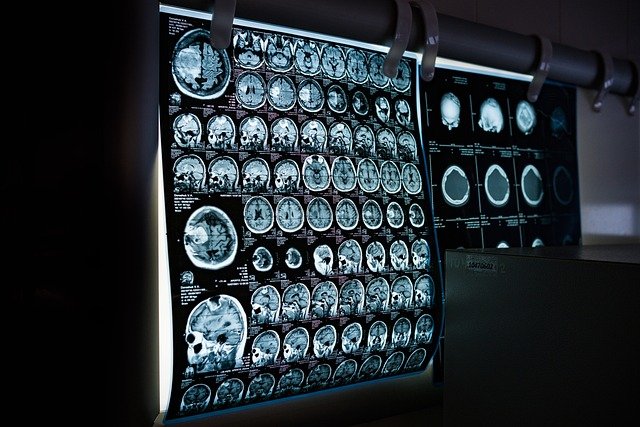Triple-Negative Breast Cancer: What Every Woman Should Know
Triple-negative breast cancer (TNBC) is a rare yet highly aggressive type of breast cancer. It stands apart from other forms not only in how it develops but also in how it responds to treatment. Understanding its unique features can help women recognize early signs and take charge of their health with confidence.
Triple-negative breast cancer (TNBC) stands apart from other breast cancer types due to its unique biological characteristics and treatment challenges. This form of cancer tends to grow more quickly, occurs more frequently in younger women, and disproportionately affects African American and Hispanic women. While the diagnosis can feel overwhelming, advances in research and treatment have improved outcomes significantly in recent years. Knowledge about this condition remains one of the most powerful tools for early detection and effective management.
What Makes Triple-Negative Breast Cancer Different
Triple-negative breast cancer gets its name from what it lacks rather than what it contains. TNBC cells test negative for estrogen receptors, progesterone receptors, and human epidermal growth factor receptor 2 (HER2). This absence means the cancer cannot be treated with hormone therapy or drugs that target HER2, which are effective for many other breast cancer types. TNBC accounts for about 10-15% of all invasive breast cancers and tends to be more aggressive, with a higher likelihood of spreading and recurring within the first few years after treatment. The cancer cells often grow and divide more rapidly than other types, and they may appear more different from normal cells under a microscope. Despite these challenges, many women with TNBC respond well to chemotherapy, and ongoing research continues to identify new targeted therapies that show promise.
Early Warning Signs
Recognizing potential symptoms early can significantly impact treatment outcomes. The most common sign of TNBC is a new lump or mass in the breast, which may feel hard and irregular or smooth and rounded. Other warning signs include changes in breast size or shape, skin dimpling or puckering, nipple retraction or discharge, redness or scaling of the nipple or breast skin, and swelling in the underarm area. Some women notice a thickening in the breast tissue or changes in the texture of the skin resembling an orange peel. TNBC can develop between routine mammograms since it often grows quickly, making monthly self-examinations and awareness of normal breast tissue important. Any persistent changes lasting more than a few weeks warrant evaluation by a healthcare provider. Women at higher risk, including those with BRCA1 gene mutations, family history of breast cancer, or African American heritage, should discuss enhanced screening protocols with their doctors.
How TNBC Differs from Other Breast Cancer Types
The biological differences between TNBC and other breast cancers extend beyond receptor status. Hormone receptor-positive breast cancers, which make up about 70% of cases, grow in response to estrogen or progesterone and can be treated with hormone-blocking medications like tamoxifen or aromatase inhibitors. HER2-positive breast cancers, representing about 20% of cases, have excess HER2 protein and respond to targeted drugs like trastuzumab. TNBC lacks these treatment targets, making chemotherapy the primary systemic treatment option. However, TNBC tumors often respond well initially to chemotherapy, with higher rates of complete pathological response compared to some other types. The cancer tends to be higher grade, meaning the cells look very different from normal cells and divide more rapidly. TNBC also has different patterns of metastasis, showing a greater tendency to spread to the brain and lungs rather than bones. Recurrence risk is highest in the first three to five years after treatment, but after this period, the risk decreases significantly compared to hormone receptor-positive cancers, which can recur many years later.
Current Treatment Approaches
Treatment for TNBC typically involves a combination of surgery, chemotherapy, and radiation therapy. Chemotherapy may be given before surgery (neoadjuvant therapy) to shrink tumors or after surgery (adjuvant therapy) to eliminate remaining cancer cells. Neoadjuvant chemotherapy offers the advantage of assessing how well the cancer responds to treatment and may make breast-conserving surgery possible for larger tumors. Recent advances have introduced immunotherapy drugs like pembrolizumab for certain TNBC cases, particularly those that are PD-L1 positive or have high tumor mutational burden. PARP inhibitors such as olaparib and talazoparib have shown effectiveness in women with BRCA mutations and metastatic TNBC. Researchers are also investigating antibody-drug conjugates like sacituzumab govitecan, which delivers chemotherapy directly to cancer cells. Radiation therapy typically follows surgery to reduce local recurrence risk. Clinical trials continue to explore new targeted therapies, combination treatments, and personalized medicine approaches based on genetic profiling of tumors. Women diagnosed with TNBC should discuss participation in clinical trials with their oncology team, as these studies offer access to cutting-edge treatments.
Support and Resources for Women with TNBC
Navigating a TNBC diagnosis requires both medical expertise and emotional support. Numerous organizations provide resources specifically for triple-negative breast cancer patients. The Triple Negative Breast Cancer Foundation offers educational materials, research updates, and community connections. The American Cancer Society and Susan G. Komen provide comprehensive information about treatment options, financial assistance programs, and local support groups. Many cancer centers have dedicated breast cancer navigators who help coordinate care and connect patients with resources. Online communities through platforms like Inspire and Facebook groups allow women to share experiences and advice with others facing similar challenges. Mental health support through counseling or therapy can help manage the emotional impact of diagnosis and treatment. Practical assistance with transportation, childcare, meal preparation, and household tasks often becomes necessary during treatment, and organizations like Cancer Care and local community groups can help. Genetic counseling may be appropriate for women with TNBC, particularly those diagnosed before age 60 or with family history, as BRCA mutations increase TNBC risk. Support extends to family members and caregivers who also need information and coping strategies. Many hospitals offer wellness programs including yoga, meditation, nutrition counseling, and exercise classes designed for cancer patients.
Moving Forward with Knowledge and Hope
While triple-negative breast cancer presents unique challenges, ongoing research continues to improve outcomes and quality of life for women with this diagnosis. Understanding the distinct characteristics of TNBC, recognizing symptoms early, exploring all treatment options including clinical trials, and accessing comprehensive support systems can make a significant difference in the cancer journey. Women should maintain open communication with their healthcare teams, ask questions, seek second opinions when needed, and advocate for their needs throughout treatment and recovery. The five-year survival rate for localized TNBC is approximately 91%, and many women go on to live cancer-free lives. Advances in precision medicine and targeted therapies offer increasing hope for even better outcomes in the future.
This article is for informational purposes only and should not be considered medical advice. Please consult a qualified healthcare professional for personalized guidance and treatment.





